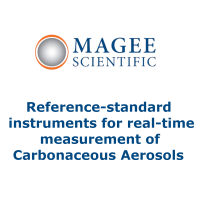“Aerosol and droplet generation from performing with woodwind and brass instruments”
Lauren P. McCarthy, Christopher M. Orton, Natalie A. Watson, Florence K. A. Gregson, Allen E. Haddrell, William J. Browne, James D. Calder, Declan Costello, Jonathan P. Reid, Pallav L. Shah, and Bryan R. Bzdek
Read the full article: Aerosol Science and Technology, 55:11, 1277-1287, DOI: 10.1080/02786826.2021.1947470
The potential airborne transmission of COVID-19 has raised significant concerns regarding the safety of musical activities involving wind instruments. A study by Lauren et al. investigated aerosol (0.5–20 μm diameter) and droplet (>20 μm diameter) generation during woodwind and brass instrument playing, compared with breathing and vocalization (speaking and singing). The study was carried out in an environment with no background aerosol particles, with 9 participants playing 13 different woodwind and brass instruments (piccolo, flute, oboe, clarinet, bassoon, alto saxophone, trumpet, trombone, tuba). They found that aerosol number and mass generated during instrument playing was of similar magnitude to that produced by breathing, and is lower than that associated with vocalization at high volume levels. Although large droplets were routinely produced during singing and coughing, no large droplets were detected from any musical instrument. Together the findings demonstrate that playing woodwind and brass instruments generates less aerosol than activities involving vocalization, which may have important policy implications in the context of the pandemic, as many performing arts activities have been severely restricted.

Figure 1. Aerosol (a) number and (b) mass concentrations for a range of activities performed by 25 professional singers (left) and 9 instrumentalists (13 instruments, right). Comparable activities across cohorts are identified by green (breathing), orange (speaking, 70–80 dBA), and purple (singing 70–80 dBA) boxes.
This issue’s Newsletter Committee:
Editor | Kerry Kelly, University of UtahSenior Assistant Editor | Krystal Pollitt, Yale UniversityJunior Assistant Editor | Justice Archer, University of BristolGuest Contributor | Dong Gao

